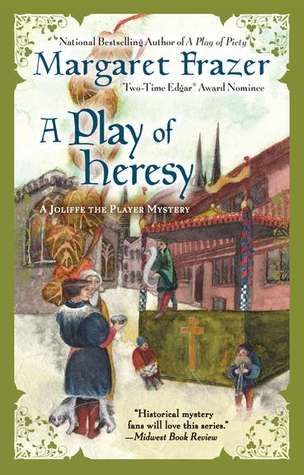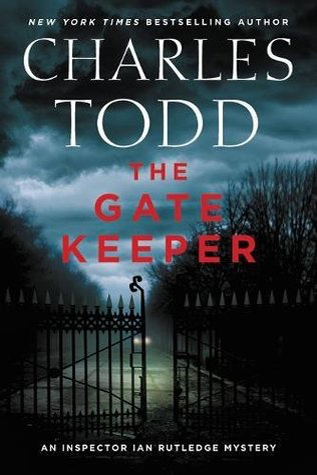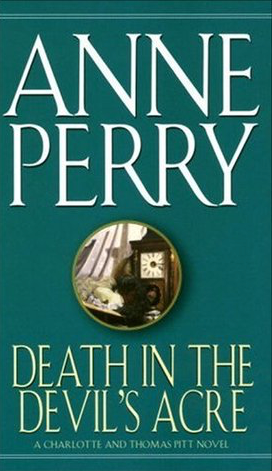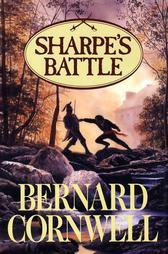I received this book for free from the library in exchange for an honest review. This does not affect my opinion of the book or the content of my review.
Source: the library
The Bishop's Tale
by
Margaret Frazer
historical mystery in a paperback edition on December 1, 1994 and has 208 pages.
Explore it on Goodreads or Amazon
Other books by this author which I have reviewed include A Play of Knaves, A Play of Lords, A Play of Treachery, A Play of Piety, Murder Most Medieval: Noble Tales of Ignoble Demises, A Play of HeresyCoventry, Easter, plays, murder, spies, guilds, mercer, jealousy, Judas, theater, directing, acting, suicide, costumes, religious plays,, The Novice's Tale, The Servant's Tale, The Outlaw's Tale, The Murderer's Tale, The Boy's Tale, The Prioress' Tale, The Maiden's Tale, The Squire's Tale, Clerk's Tale, The Bastard's Tale, The Hunter's Tale, The Widow's Tale
Fourth in the Sister Frevisse medieval mystery series revolving around a very intelligent nun.
In 1995, The Bishop’s Tale was nominated for Best Novel at the 1995 Minnesota Book Awards.
My Take
It’s odd but I can’t believe it’s only been four stories. I feel as though I’ve known Dame Frevisse forever. Frazer has done an amazing amount of research on the time period for she sets the time period for us beautifully. From furniture to clothes, manners to law, travel to architecture, Frazer takes you back to that era.
This one is interesting for its look at funerary protocols for a man who is wealthy and highly respected at court, in the city, and in the countryside. Well, and for the explorations Frevisse undertakes to discover why the victim died. Galen’s book is quite the authority. It was also fascinating to read of Chaucer’s extensive library and makes me ever so grateful for the ease of acquiring books today as well as our access to libraries and the Internet. What would Chaucer or Frevisse have thought of any of that?
I must confess that in some ways, I almost regret the largesse, but only because it is so easy today to find new books to read whereas then the few they had meant reading and re-reading past having them memorized. I always envy people’s ability to spout quotations. For one to begin a quote and for another to finish it. Still, I’d not give up today’s riches.
Yet another contrast is the…gullibility…it’s not really a fair word to use of people then in believing it was God’s will. We have the benefit of science and greater knowledge to explain such things now. Then again, perhaps we rely too much upon what can be theorized over and proved scientifically.
It’s inevitable I suppose that if you get any group of people together, you can find those who hate another. Probably more true when it’s a group of such people who expect their station in life to allow them so much more leeway. Or greater strictures!
Frazer does give us a peek at a different side to Beaufort when he reminisces about his loss. The loss of a trusted friend in whom he could find and be assured of wise counsel. Thomas had not been a man ambitious for power or a life at court. Unlike Beaufort.
I realize that Frevisse was in a difficult position, attempting to question witnesses without having visible authority and without tipping people off, but this was the least successful part of the story. I’m not sure if it’s because I knew what she was doing or because I’m too unfamiliar with people’s expectations of the time were of women’s intellect.
The Story
Thomas Chaucer is dying and has a personal bequest he trusts the bishop to carry out for him. He hopes for one last word with Frevisse, but the illness is progressing as it will. All that’s left to Frevisse is to provide what comfort she can to her Aunt Matilda even as she sorely grieves the man she saw as her best friend.
It’s Bishop Beaufort’s assessing gaze on Frevisse that bothers her, and when she learns of her uncle’s words to the bishop, Frevisse is yet more concerned. As bishop, she is subject to his commands and when one of the guests at the funeral feast dies, Thomas’ words come back to haunt Frevisse.
For the bishop expects her to discover if it was indeed God’s hand or man’s.
The Characters
Dame Frevisse is still mourning the decisions she made in The Outlaw’s Tale, struggling with the guilt. Dame Perpetua has been sent as companion with Frevisse when she travels to her uncle’s deathbed. Both sisters are associated with St. Frideswide’s Priory of which Domina Edith is still the prioress, but barely.
Thomas Chaucer is her uncle by marriage but her best friend in life. Matilda is his wife and Frevisse’s aunt. A lady given to talking, talking, talking, and a firm belief in suitable occupations for women. A bit of a nitwit. Thank goodness, their daughter Alice, the current Countess of Suffolk, Frevisse’s cousin, and a bane of her childhood, took more after Thomas. William de la Pole is the earl of Suffolk. Chaucer had mentioned that Alice was the brains and William the rank for he certainly hasn’t the wit. Sir Philip is the household priest, a recommendation of the bishop’s. His advancement can only come at the bishop’s hands limited as he is by his birth. Master Gallard Basing is Sir Phillip’s brother and the household usher. Master Broun is the snippy doctor who tries to help the victim. It’s sweet that Thomas took such care of his clerk Master Lionel‘s pride and life.
Cardinal Bishop Henry Beaufort of Winchester is his cousin through their mothers and considers him his best and most trustworthy friend. Beaufort’s mother had been the Duke of Lancaster’s mistress bearing him four children including Henry. It wasn’t until late that Lancaster married his mistress, and Richard II legitimized the children.
Mourners who come to share their grief over Thomas’ passing include the nasty Sir Walter Fenner (see The Novice’s Tale) although it does bring young Robert as well (It’s nice to get caught up with what’s happening in the Fenner household. Well, for us, anyway.); the sour, agitating Sir Clement Sharpe with his nephew Jevan Dey, his heir Guy Sharpe, and his ward Lady Anne Featherstone; Sir Ralph and Lady Eleanor; Sir Edward; and other assorted merchants and nobles.
The Cover and Title
The very bland heavy cream cover differs somewhat from the earlier covers in that the framing pillars are gone and the Gothic window has been enlarged. It’s still a masterpiece in granite — a deep gray brown this time with burgundy marbled insets in the window’s side supports and ending in a green marbled panel at their base. The squared bottom portion of the window provides a peek at a bishop’s miter and a just-blown candle in its overflowing holder. The stained glass insert that fills the peak appears to be of a white temple with a pointed golden roof and a border of red diamond shapes in a white ground and bordered on both sides in a lapis lazuli blue inset with small golden squares. The blank space above the curved upper window frames is filled with carved acanthus leaves in a triangular frame.
The title is all about the very important Bishop Beaufort making it The Bishops’ Tale.















